2/5 Pages

The two roles of ROBO CROSS ((1) Improve integration efficiency of robot systems, and (2) Create new value through data utilization) will be explained with use cases. USECASE Improvement of robot system integration efficiency Creation of new value through data utilization (Examples: Manufacturing sites, restaurants, healthcare fields, and logistics fields) Improvement of robot system integration efficiency ー Data retrieval(For example, the case of gripper selection) Conventional system setup Trial and error on actual machines to select or design various hands to suit the work to be handled ROBO CROSS Search based on proven results from a large database ー Design of the entire system Conventional system setup A long time is spent […]
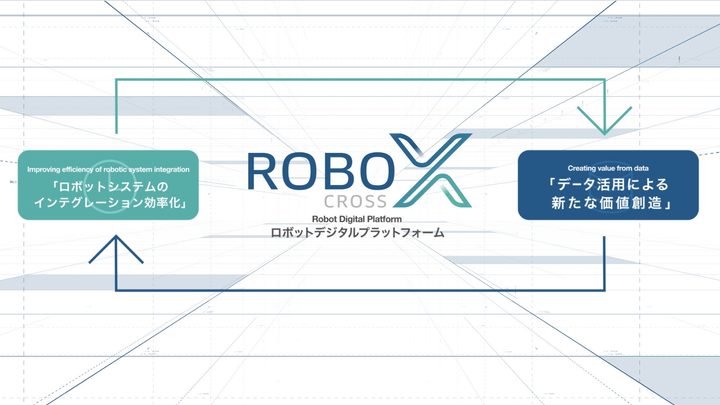
The robotics business of Kawasaki Heavy Industries has proposed automation and labor-saving solutions mainly for the manufacturing industry. On the other hand, there are still many social issues in the world. How can robots help to solve these social problems?Kawasaki will cooperate with companies that are familiar with various issues and will work to expand the scope of robot utilization and to contribute to the solution of social issues through the utilization of the data collected by robots. The platform concept to realize this is the Kawasaki Robot Digital Platform, ROBO CROSS. What is ROBO CROSS? “An open development environment for the efficient creation of robot systems” , “A data […]

As a comprehensive robot manufacturer, Kawasaki will not only provide the robots themselves, but will also propose new solutions to streamline the integration process.We aim to accelerate the social implementation of robots and launch an innovation platform “ROBO CROSS” where robots acquire data in various social scenes, become a driving force for the digitalization of society as a whole, and ultimately provide unprecedented value to end users. A new world of robotics created by Kawasaki Robotics. The key to this new world is the Kawasaki Robot Digital Platform “ROBO CROSS”Mr. Takagi, Head of the Robotics Division, gives an overview of ROBO CROSS and discusses the new world created by Kawasaki […]

Due to the spread of COVID-19, the logistics industry has seen an explosive increase in the volume of goods handled, and automation in this industry is advancing rapidly with a focus on warehouses. By combining the versatility of robot arms with the mobility of trackless unmanned transport vehicles, Kawasaki can offer measures for the automation and optimization of logistics processes that involve automated warehouses including product receiving and shipping. Taking on the challenge of the “barriers to warehouse entry and shipment”in logistics automation In recent years, factors such as the expansion of the EC market have led to increasingly serious labor shortages in the logistics industry. Logistics labor saving and automation […]
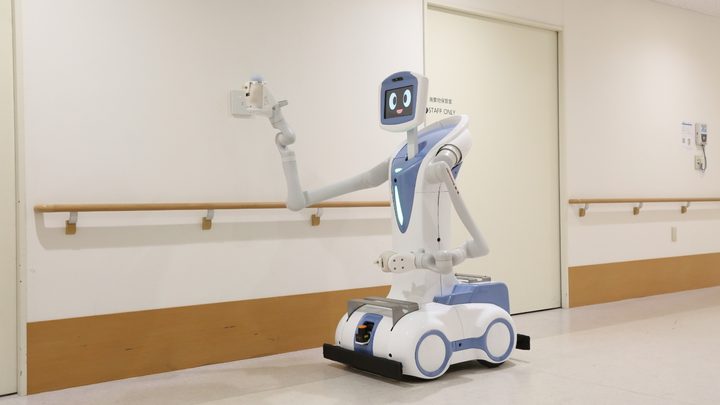
Japan is in an era of population decline. Robots have so far only been used in limited areas such as the manufacturing industry. However, they are expected to be required in various other industries in the future. One of those industries is the service industry. In addition to chronic labor shortages, the coronavirus crisis has also increased the severity of the business environment for companies. Robots for the service industry. To achieve this, Kawasaki is developing the service robot Nyokkey. A robot for the service industry – “Nyokkey” Nyokkey is an autonomous mobile type service robot. It has been developed to work together with humans. It moves around in the same […]
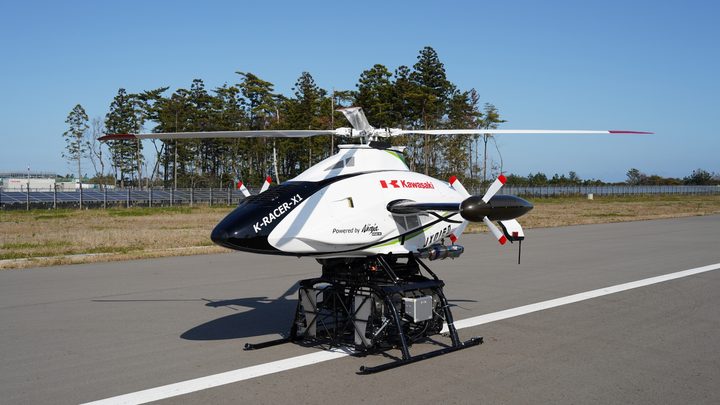
This is an introduction of the potential for future transportation systems that combine robotics, mobility, and aviation technologies from among the wide range of technologies that Kawasaki is involved in, and utilize equipment such as VTOL drones and delivery robots which are currently under new development. Labor shortages in logistics The declining birth rate and aging population in Japan mean that an insufficient working population is becoming a serious social issue. In one estimate, it is predicted that in 2030, there will be 64.29 million people supplying labor against a labor demand of 70.73 million people. It is considered that there will be a labor shortage of 6.44 million people […]
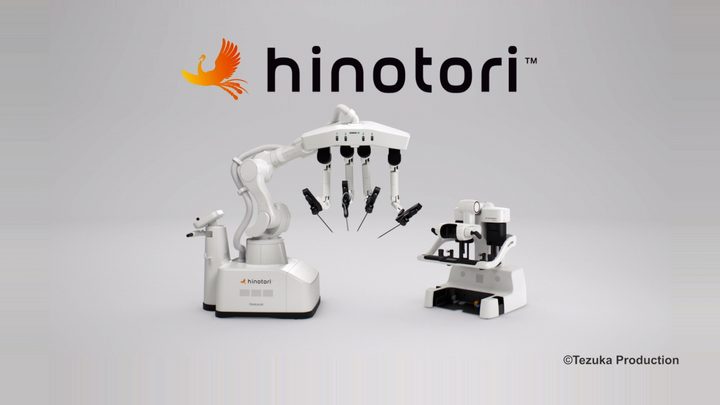
The merits of laparoscopic surgery include that it does not leave large operation scars, the recovery after the surgery is quick, and the burden placed on the patient’s body can be reduced (= it is minimally invasive). However, laparoscopic surgery requires a high level of skill, so there has been the issue that performing the surgery itself has been difficult. In response to this, Kawasaki worked to develop a robotic system for surgery support that could move the surgical instruments inside the abdominal cavity in the same way as our own hands. hinotori™ Surgical Robot System Medicaroid Corporation was established in 2013 as a joint venture between Kawasaki, which has […]

On December 1, 2021, Kawasaki Heavy Industries and the Sony Group started the business operation of “Remote Robotics Inc.”, which is a new joint venture in remote robotics platform business. The company aims to realize a remotely-connected society that enables every person to participate in society and plans to propose a new safe and secure work style through remote robotics platforms. We spoke to the company President and CEO Hirokazu Tanaka and Executive Vice President and COO Shogo Hasegawa about the future of Remote Robotics. プロフィール Hirokazu TanakaRemote Robotics Inc.President and Representative Director 1998: Joined Sony Corporation 2005: Seconded to Sony Electronics Inc. (Returned in 2010) 2015: General Manager, Sensing Module Business Department, […]
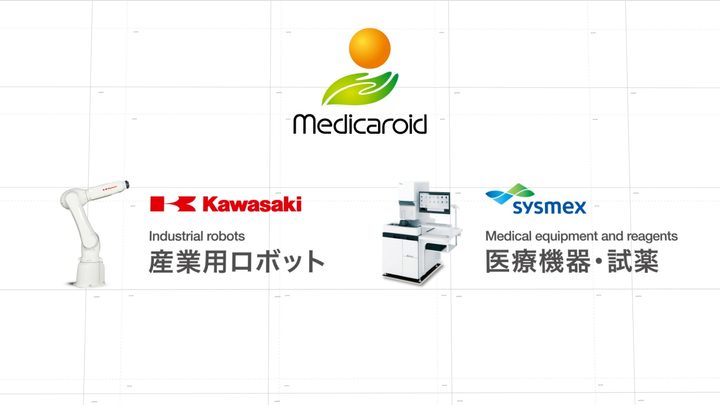
The new coronavirus continues to wreak havoc around the world. Economic activities are being restricted and there has been a significant impact on our lives. According to one theory, it may take another three years before the movement of people returns to the levels before the appearance of COVID-19. It will be necessary to continue monitoring the situation of infections and reinforcing quarantine inspection systems during that time. Kawasaki aims to realize a safe and secure society by using robots to automate PCR testing for COVID-19 virus. Releasing medical personnel from the risk of infection Conventionally, PCR testing has been conducted manually by medical personnel. In addition to this posing […]
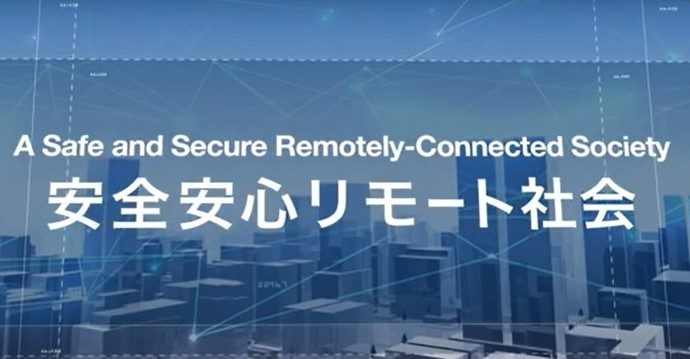
Remote work has expanded rapidly due to the COVID-19 pandemic, and it has taken root as a new working style. By combining robots and remote communication technology, we are converting on-site work that is difficult to execute without human presence, in fields such as manufacturing, medicine, and services, to remote work through robotic remote control. This is an introduction of the image of a safe and secure remotely-connected society envisioned by Kawasaki. Solving future labor shortages with robots In Japan, it is said that the decline of the working population will become a serious problem as the aging of the population progresses. There is particular concern about the reduction in […]
